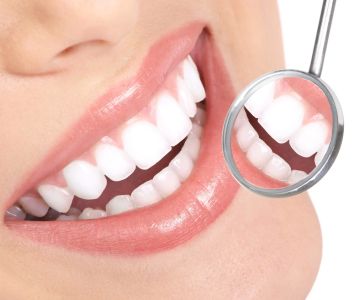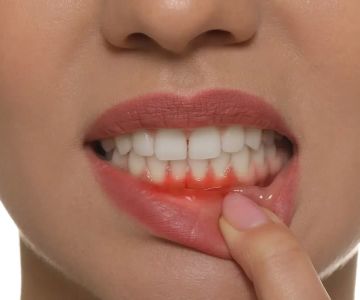Causes and Progression of Gum Disease
Gum disease, also known as periodontal disease, is a prevalent oral health issue that can have significant implications for your overall well-being. The main cause of gum disease is the buildup of dental plaque, which is a collection of various bacteria. Poor oral hygiene habits increase the likelihood of plaque accumulation and subsequent infection of the gums and supporting bone. However, genetics can also play a role, as some individuals have a predisposition to an immune system response that makes them more susceptible to gum disease. Additionally, factors such as smoking, diabetes, autoimmune diseases, hormonal changes, stress, and a family history of gum problems can increase the risk.
There are several stages of gum disease. Gingivitis is the earliest stage, characterized by red, puffy, and bleeding gums. If left untreated, it can progress to mild periodontitis, where the bacteria penetrate beneath the gums and affect the supporting bone, creating pockets. In moderate and advanced stages, the erosion of ligaments, soft tissues, and bone continues, leading to loose teeth and potential tooth loss.
Symptoms and Complications
The symptoms of gum disease can vary. They may include reddish or purplish gums, bleeding, soreness, bad breath, an unpleasant taste, pain when chewing, gum recession, loose teeth, and changes in the way teeth fit together. It's important to note that gum disease often progresses without causing significant pain, especially in the early stages, making it crucial to be aware of the warning signs.
Complications of gum disease extend beyond oral health. Untreated gum disease can result in tooth loss and has been linked to other serious health conditions such as heart disease, stroke, and diabetes. The infection can spread throughout the body, causing a negative impact on overall health.
Diagnosis and Tests
Dentists diagnose gum disease during routine examinations by assessing plaque buildup and inquiring about symptoms. They may refer patients to a periodontist for more detailed evaluation and treatment. Periodontal probes are used to measure the pockets around teeth to determine the extent of bone loss. Dental X-rays provide a detailed view of bone loss, and older X-rays can be compared to monitor changes over time.
Management and Treatment Options
Although gum disease is not curable, it is manageable with appropriate treatment. The choice of treatment depends on the severity of the condition and various factors such as overall health, smoking status, and previous treatments. For very early gum disease (gingivitis), routine dental cleaning and improved oral hygiene can reverse the condition. Scaling and root planing is recommended for mild gum disease, while pocket reduction surgery, bone grafting, gum grafting, guided tissue regeneration, and advanced procedures like LANAP may be necessary for moderate to advanced cases.
Prevention Strategies
In most cases, gum disease can be prevented through consistent and proper oral hygiene. Brushing teeth two to three times a day, flossing daily, using an antibacterial mouthwash, avoiding smoking and tobacco use, and visiting the dentist for regular cleanings and exams are key steps in reducing the risk. Even those with a genetic predisposition or other health conditions that increase the risk can benefit from more frequent cleanings with a dental hygienist.
Outlook and Prognosis
Gum disease is not life-threatening, but it requires management to prevent complications and preserve oral health. Early detection and treatment improve the prognosis and help individuals better control the condition. Understanding the signs and seeking timely dental care are essential for maintaining a healthy mouth and minimizing the potential negative effects on overall health.
In summary, gum disease is a common and potentially serious oral condition that can have wide-ranging effects on health. Understanding its causes, symptoms, diagnosis, treatment options, and prevention strategies is crucial for maintaining good oral hygiene and overall well-being. By taking proactive measures and seeking appropriate dental care when needed, individuals can minimize the risk of gum disease and its associated complications, ensuring a healthy and functional smile for years to come.






 Westgate Dental Arts
Westgate Dental Arts Coventry Family Dental
Coventry Family Dental Familia Dental
Familia Dental Dr. Daniel S. Fife, DDS
Dr. Daniel S. Fife, DDS Dentistry At Suburban Square: Michael I. Wollock, DMD
Dentistry At Suburban Square: Michael I. Wollock, DMD Comfort Care Dental
Comfort Care Dental The Importance of Oral Health Education During Pregnancy for a Healthy Pregnancy
The Importance of Oral Health Education During Pregnancy for a Healthy Pregnancy Why Skipping Dental Checkups Can Lead to Bigger Oral Health Problems
Why Skipping Dental Checkups Can Lead to Bigger Oral Health Problems Best Tips for Brushing Your Teeth Properly for Healthy Gums: Essential Techniques for Oral Health
Best Tips for Brushing Your Teeth Properly for Healthy Gums: Essential Techniques for Oral Health Advantages of Porcelain Dental Restorations
Advantages of Porcelain Dental Restorations How Can Diabetes Cause Tooth and Gum Problems? Preventing and Managing Oral Health Issues
How Can Diabetes Cause Tooth and Gum Problems? Preventing and Managing Oral Health Issues Healthy Habits for Promoting Good Oral Health and Hygiene: Tips for a Healthy Smile
Healthy Habits for Promoting Good Oral Health and Hygiene: Tips for a Healthy Smile